Returning Home from South Africa
The enthusiasm of the Victorian contingents going off to fight the Boers in South Africa was probably more than matched by the joy and relief they experienced on returning to Melbourne by the end of 1902. If the published extracts from letters in the local papers sent to relatives and friends and the comments made on arrival at home are to believed, the conditions in South Africa and the tactics used to overcome the tenacity of the Boers were at least tiring, and at times stressful and distasteful.
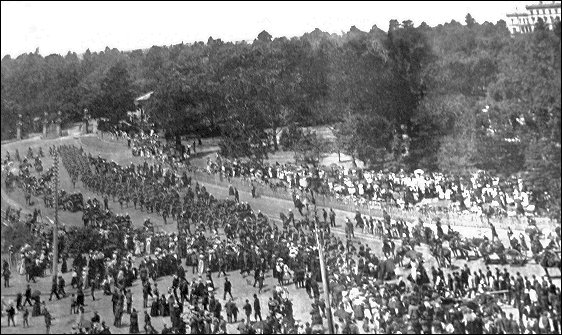
Crowd farewells departing troops opposite Government House, 1900.
Sergeant A Fisher writing home commented on the awful state of the country, “When war is good stand up fighting it is not so bad, but when they bring it to what they have now, you see it in its worst form, and the country is a complete wreck. The other day, where we were, the houses had all been burnt but the walls were left standing, and they have rigged up a sort of shelter roof, and there you will find perhaps six women and their children all huddled in. They live on mealies, or whatever they can get, but give them a chance, and they will put a bullet through you quicker than blink.” [1]
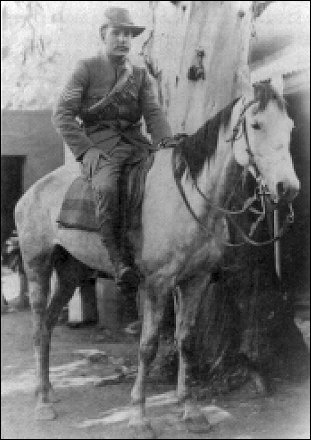
Sergeant A. Fisher.
Trooper McCaughan of the Fourth Contingent, in his letter to Jim written from Umtali on June 25, 1900, described his situation in South Africa. “All the men are singing out about not being paid, and nearly all are sorry they ever saw the regiment - here is one nigger who will never be sworn in again. We have been fooled about something terrible. The discipline is rotten in this tin pot regiment, but I have very good times of it, and I am as fat as a whale. We are all as lazy as they make them, we won’t know how to work when we get discharged. May my hair turn green if ever I wear a kharki (sic) suit again.” [2]
Sergeant Murphy left Cheltenham in 1899 joining the Imperial Light Horse in Natal to fight the Boers. Writing to his sister from Pretoria some months later, he said he was pleased that the war was nearly over because conditions were not pleasant. He complained, “It is getting very cold here now and what with bad food and sleeping out at nights with no tents, I am about knocked up.” [3] While Murphy’s description of conditions was probably correct his prediction about the duration of the war was astray as the peace was not declared until May 31, 1902.
Before this was to happen many of the members of the colonial contingents returned home. Their initial enlistment was for twelve months but some were sent home earlier because of wounds or ill health. The Harleck Castle brought back 181 Victorians and 275 troops from other colonies. Amongst this number were four from the Moorabbin/Oakleigh district. Corporal G F Daniel of Oakleigh, Lance Corporal T Matson of East Brighton, and Private G Stayner of South Brighton were all members of the First Contingent while Private W F Daff from South Brighton was with the Second Contingent. [4]
Members of the community were urged to give the returning troops an enthusiastic and boisterous welcome so a variety of celebrations were planned. A half holiday was proclaimed and after lunch at Victoria Barracks the returning troops mustered in their respective units to march through the City accompanied by five thousand local militia members.
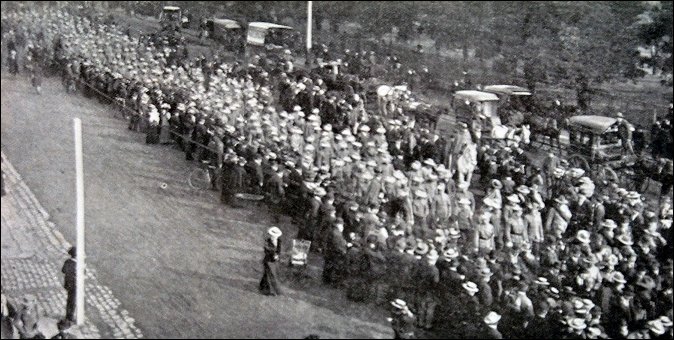
Returning soldiers marching along Nicholson Street to Exhibition Buildings, 1900.
President of the Moorabbin Shire, Cr Thomas Bent, convened a meeting at South Brighton of twenty residents and twelve councillors to consider what form the welcome home should take. Cr Burgess suggested that a social evening be arranged later in the week at the Orderly Room in Cheltenham. He thought this was the most appropriate venue as it was where the returning soldiers had received their first military training and where some of the farewell ceremonies had been held. Others thought the event should be held in South Brighton because two of the returning men were born in that locality. Moreover, as Cr Leary pointed out, Cheltenham had had the honour of arranging their departure so he thought the welcome home should be somewhere else. [5] On a show of hands Cheltenham, with twelve votes, won by one from South Brighton. When it came time to set the date of the welcome function, reaching a consensus was even more difficult to achieve as different people had arranged their own local receptions. Finally Cr Bent lost his patience with the meeting and in a vigorous speech enunciated his view that the reception should be official and representative of the shire, not localities. As the Shire Hall was provided by the ratepayers for the councillors, it was the official hall and that was where the reception should be held, the president said. His views were adopted. [6]
The report in the Brighton Southern Cross suggests the returning troops were tired after the month’s sea voyage and were not in a fit condition to battle “with the roughs of Melbourne whose only idea of showing their cordiality seemed to be to impede the march of the kharki clad soldiers.”[7] Matson survived the march but Stayner fell out when the march reached Parliament House, while Daff was “captured by five admirers and shouldered off near Parer’s Café.” Apparently Daff and Stayner reached home about dusk but Lance Corporal Matson travelled home on the last train where he was met at the East Brighton (Bentleigh) station, lifted on to the shoulders of two friends, and carried up Centre Road accompanied by some thirty ‘patriotic Australians’.
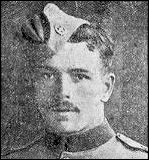
Trooper Stayner of South Brighton. Courtesy La Trobe Collection, State Library of Victoria.
Lance Corporal Matson’s welcome home to East Brighton on December 13, 1900 consisted of a social and dance commencing at 7.30 p.m. and concluding at 2 a.m. The price of admission to the social was one shilling while the charge for the dance was two shillings for a double ticket. During a pause in the proceedings at the social Cr Burgess presented Tom Matson with a gold chain and a suitably inscribed locket. [8] Earlier in the day 300 students from the State and Catholic schools marched up Centre Road to Matson’s residence where under the baton of Constable Holland they sang Home Sweet Home and When Tommy comes Marching Home again. The East Brighton drum and fife band of sixteen musicians accompanied them. Matson in his response said he was quite knocked over by the very hearty welcome; it was worse than Kruger’s pom poms. He went on to suggest that in a few years time the boys would be volunteering to fight for England and there would be plenty of little girls to kiss them when the came back. This brought an amused reaction for the audience.

Lance Corporal Matson of East Brighton. Courtesty La Trobe Collection, State Library of Victoria.
The Shire welcome was a packed occasion. A large marquee was erected in the Shire hall grounds where a ‘promenade’ concert was arranged, but the pressure of a crowd of 600 people made it impossible to move. The returning heroes were seated on the platform along with Cr Bent, the shire president, Colonels Templeton and Otter, together with shire councillors. The programme opened with a piano solo by Miss Hotton followed by Mr Ethell singing ‘Scarlet and Blue’. He later sang ‘Sons of the Sea’ with the audience joining in the chorus with gusto. Other songs on the program included ‘Dear Home Songs’, ‘When Tommy comes Marching Home again’, ‘To the Front’, ‘The Lads in Red’ and ‘Where’s the War?’. During the festivities the President presented the returning troops with medals. [9]
When Colonel Templeton responded to the welcome provided for the young returning soldiers he suggested D was for Daff, Darting and Dutiful; M for Mason, Manly and Modest; R for Rigg, Reserved and Reliable; and S for Stayner, Strenuous and Steadfast. “They had been tried and not found wanting”, he claimed. Private Stayner in his response told of the day they entered Pretoria. They were sent out to get wood and made their way to a house where the occupants had been cleared out leaving everything behind. Stayner recounted, “They sold the piano to a woman for 30s., and while she was away getting a cart to remove it one of them sold it to a man for £2. The latter purchaser was a Jewey kind of man and took it away at once, so the woman was left to grieve over the loss of her 30s.” [10]
Farrier Sergeant Ockendon was hospitalised in Pretoria suffering from sciatica when his colonel said he had done enough work and deserved a rest. It was time for a younger man to take a turn the colonel thought. [11] Arriving home safely and much improved in health [12] Ockendon’s friends at the Wesleyan Church gave him a rousing welcome. With the Rev G Scholfield presiding, the hall was overflowing with people who came to welcome the Cheltenham resident back and to listen to the entertainment provided by Misses Ockenden and Miller, and Mr Elburn who sang popular songs, and Miss B Ricketts who recited ‘The Soldiers Home-coming’. Robert Woff, on behalf of the congregation, presented Sergeant Ockenden with a handsomely illuminated address, and expressed satisfaction at his safe return to this family. In his short response Ockendon commented that most of his time in South Africa was spent in the saddle. [13]

Farrier Sergeant Ockendon from Cheltenham.
Trooper Gillespie of the Third Contingent stated that while thoroughly enjoying some parts of the war, he had no particular wish for a second dose, at least not until he has had ‘a year or two of civilized living’ [14] The Gillespie and Wilson welcome home function was held at the Mordialloc Mechanics’ Institute where the songs ‘Rally Round the Flag’, ‘Blue Bells of Scotland’, ‘The Swannie River’ and ‘Scarlet and Blue’ formed a substantial part of the program. Miss Gromann recited ‘The Soldier Tramp’ before both troopers were given suitably inscribed silver watches by Mr Keast MLA. In doing so he expressed the hope that both men lived to old age. [15]
Other soldiers from other corps returning to Melbourne received local welcomes. Sergeant Major Germaine of Mentone, Trooper Sleddon of Brighton and Trooper Black of Carrum were amongst the soldiers returning from South Africa on the transport Orient in 1900. [16] Ten months later South Brighton and East Brighton members of the Fifth Contingent were welcomed home at the Public Hall where they were presented with a gold medal inscribed with their name. [17] The men involved were Corporals Ethell and Daff, Lance-Corporal Newham, as well as Privates Molneau, W Newham, J Dick, F Collins, E and S Black, L Tuck and S Reynolds. Ethell briefly expressed the thanks of the group for the welcome and Daff told two stories drawn from the South African experience.
The first story related to an occasion when several black women were interrogated. The soldiers speaking through an interpreter established that the women were about twenty years of age and unmarried. As Daff explained, “You could not tell from the way their hair was done or the style of dress because they had no dresses. Their value in the matrimonial market was two cattle but as we had no cattle they remained single.” The story generated considerable amusement amongst the audience.
The second story related to the time when “out with the column they found the enemy on a kopje about 2000 yards off and after pumping in shells from the 12 and 16 pounder firing pom-poms, and blazing away with the rifles for some considerable time, still the Mauser ‘click-clock’ continued. At last it was decided to charge the kopje and a company of the Cape Mounted Police were told off to do the duty. Away they went at a great pace. Some fell, but the others kept going. When they arrived at the summit they found the enemy to be one old Boer, sitting in a wheelbarrow, with a stack of empty cartridge cases at his side. Triumphantly they wheeled him back to the column but it took about 200 men to effect the capture.” [18]
The troopers brought back to Melbourne various souvenirs of their stay in South Africa. Private Gillespie’s collection, displayed in a local business premises, included a sjambole used by the Boers ‘to flog the Kaffir slaves’, and a split nose bullet found in the possession of a Boer prisoner. The slits were opened out before the bullet was loaded into the rifle with the object of making a more ghastly and deadly wound in the body of the enemy. [19]
An earlier returnee, Private Daff, brought back a curly terrier pup born ten weeks earlier in South Africa. Major Eddy of the First Contingent, who was killed at Arundel, took its mother there. The survival of the pup was often in doubt because Daff had great trouble feeding it on the five day train journey from Koormatic Poort to Pretoria. In addition to this live souvenir Daff also had other relics. They included a Boer pipe and Mauser bullets.

A Boer pipe souvenir. Courtesy of Moorabbin Historical Society.
Privates Stayner and Matson were not so fortunate as their collections were stolen before boarding the ship to take them home. This loss was particularly devastating for Matson because he lost a diary in which he had recorded some of his South African experiences. [20] Private Rigg came home with a belt studded with the brass shoulder badges of various British Regiments taken from dead soldiers, ‘a sad reminder of the loss England pays in times of war’. [21]
Not all members of the Victorian contingents came home with souvenirs and memories. Four men from the district died in South Africa and were buried under the veldt. Jim Collins of the Fifth Contingent was shot in the stomach during action at Wilmansrust and died the next morning. Trooper Will Christie of the Bushmen’s Contingent died of enteric fever at Rustenburg in 1900, and F Clay was killed in action at Elandshock the following year. F Fisher also died in South Africa.
A marble tablet was placed on the wall of St Matthew’s, Church of England, at Cheltenham, as a memorial to Trooper Will Christie, a surveyor by profession and previously employed by the Board of Works. Described as ‘a beautiful piece of work’ the memorial consisted of a laurel wreath surmounted with the coat of arms of the Mounted Rifles. The inscription in the middle of the wreath read, “Erected by friends in remembrance of noble deeds done by Australians in the South African war”.
The church service was conducted by the vicar, the Rev Alfred Caffin, with Colonel Tom Price unveiling the tablet. Price remarked that he was pleased that some thought had been given to those who lost their lives at the front through disease. Very much praise, he believed, was given to those who performed deeds of valour, but in his opinion the inmates of the field hospitals were as worthy to be thought of as those who lost their lives whilst in the midst of the dust and the heat of battle. [22]
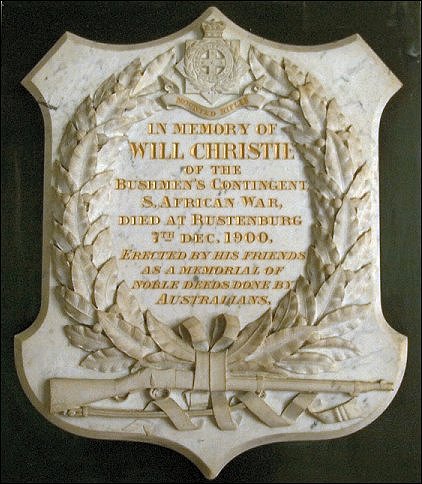
Memorial erected in St Matthew’s Anglican Church, Cheltenham to Trooper Christie.
It was the Rev Alfred Caffin who first proposed the construction of a drinking fountain to perpetuate the patriotic action of local men who served in South Africa. The idea was taken up by J Merriman who became one of the key members of the fund raising committee, together with Cr Penny as chairman. Through both their efforts over a protracted period, and the work of the committee, the money was finally raised to pay for the creation and installation of a red granite obelisk on the corner of Point Nepean and Chesterville roads to record the names of ‘Moorabbin District Boys’ who served in South Africa. [23]
At the time of the unveiling of the memorial the South African battles were long over and the troopers who survived them had returned to their civilian occupations, but their exploits and those of their dead colleagues who endured the long rides in stressful circumstances, remain recorded in local newspapers and the memories of the community.
Footnotes
- Brighton Southern Cross, July 6, 1901.
- Moorabbin News, September 1, 1900.
- Moorabbin News, September 8, 1900.
- Brighton Southern Cross, December 1, 1900.
- Moorabbin News, December 8, 1900. The Orderly Room was on the site of the Protestant Hall complex on Point Nepean Road, Cheltenham.
- Brighton Southern Cross, December 8, 1900.
- Brighton Southern Cross, December 8, 1900.
- Brighton Southern Cross, December 15, 1900.
- Brighton Southern Cross, December 22, 1900.
- Cheltenham Leader, December 22, 1900.
- Brighton Southern Cross, January 26, 1901.
- Cheltenham Leader March 30, 1901.
- Cheltenham Leader March 30, 1901.
- Brighton Southern Cross May 18, 1901.
- Brighton Southern Cross June 8, 1901.
- Brighton Southern Cross, July 13, 1901.
- Moorabbin News May 17, 1902.
- Moorabbin News, May 17, 1902.
- Moorabbin News, May 18, 1901.
- Brighton Southern Cross, December 8, 1900.
- Brighton Southern Cross, August 25, 1900.
- Moorabbin News July 13, 1901.
- See :
